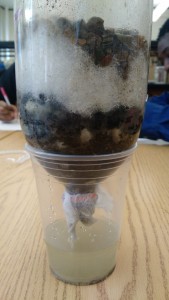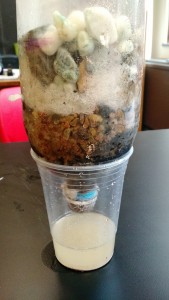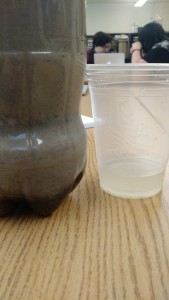In My Classroom #14 – Building a Wetland Filter Lab
Welcome to the KABT blog segment, “In My Classroom”. This is a segment that will post about every two weeks from a different member. In 250 words or less, share one thing that you are currently doing in your classroom. That’s it.
The idea is that we all do cool stuff in our rooms and to some people there have been cool things so long that it feels like they are old news. However, there are new teachers that may be hearing things for the first time and veterans that benefit from reminders. So let’s share things, new and old alike. When you’re tagged you have two weeks to post the next entry. Your established staple of a lab or idea might be just what someone needs. So be brief, be timely and share it out! Here we go:
Hello! It’s been a while since we’ve had a post like this. Thought I’d share something I’ve done recently in my class!
 Right now I’m smack-dab in the middle of my biodiversity unit in my Environmental Science course. I like to save this unit for the spring so we can take advantage of the beautiful weather. We’ve been learning about methods for sampling biodiversity (quadrats), but today we focused on the question: Why should I care? I use this lab to model ecosystem services, such as water purification, to show students what conserving biodiversity can do for us. It involves using common classroom items to build a wetland filter to clean “polluted” water. If you’re not overly familiar with how wetlands function as natural filters, you can read more about it here.
Right now I’m smack-dab in the middle of my biodiversity unit in my Environmental Science course. I like to save this unit for the spring so we can take advantage of the beautiful weather. We’ve been learning about methods for sampling biodiversity (quadrats), but today we focused on the question: Why should I care? I use this lab to model ecosystem services, such as water purification, to show students what conserving biodiversity can do for us. It involves using common classroom items to build a wetland filter to clean “polluted” water. If you’re not overly familiar with how wetlands function as natural filters, you can read more about it here.
The filters are just 2-liter bottles with the bottoms cut off. I use a small piece of cheesecloth to cover the top to help keep the filter components inside. I supply the students with materials that function similarly to natural wetland components – cotton batting to act as roots, a variety of gravel sizes, soil, and sand.  You could also add materials, such as clay, charcoal, or sphagnum moss. I have my students think about what each material might represent in real life and instruct them to build a filter that they think might resemble a typical wetland. The “polluted” water that the filter needs to clean is just a mixture of whatever I have laying around. Today it was soil, sand, diatomaceous earth, and canola oil.
You could also add materials, such as clay, charcoal, or sphagnum moss. I have my students think about what each material might represent in real life and instruct them to build a filter that they think might resemble a typical wetland. The “polluted” water that the filter needs to clean is just a mixture of whatever I have laying around. Today it was soil, sand, diatomaceous earth, and canola oil.  It looked gross when all mixed together and was made of materials that don’t dissolve in water, making them relatively easy to filter out.
It looked gross when all mixed together and was made of materials that don’t dissolve in water, making them relatively easy to filter out.
To save some time, we just compared the murkiness of the water after running the polluted water through their filters. You could get a little more involved and do some turbidity tests, if you really wanted.
Peggy Porter – I’m lucky enough to see the cool things you do. You should share with the group!
 Previous Post
Previous Post
Thanks for sharing! This is a neat idea.